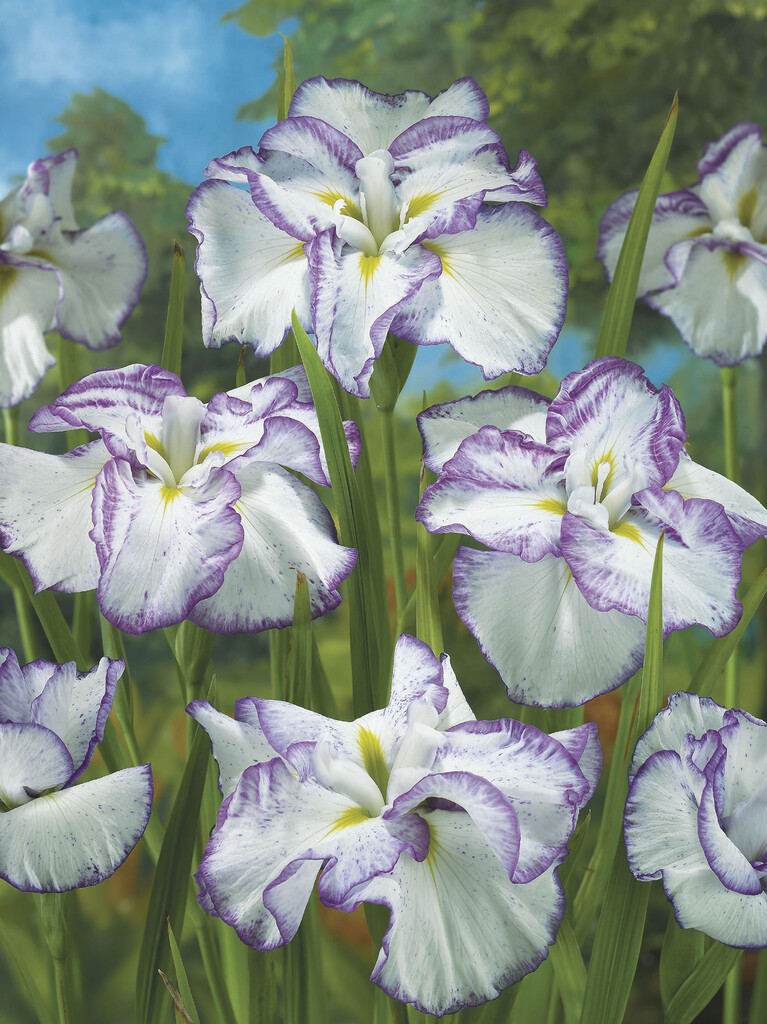Iris ensata 'Light at Dawn'
Japanese water iris 'Light at Dawn'
A clump-forming, upright perennial, to around 90cm high in flower, with narrowly sword-shaped, slightly grey-green leaves. Flowers are large, with pure white petals edged and speckled with dark purple, and a bright yellow throat. Late flowering
Size
Ultimate height
0.5–1 metresTime to ultimate height
2–5 yearsUltimate spread
0.1–0.5 metresGrowing conditions
Moisture
Moist but well–drained, Poorly–drainedpH
Neutral, AcidColour & scent
| Stem | Flower | Foliage | Fruit | |
| Spring | Green Grey Silver | |||
|---|---|---|---|---|
| Summer | White Purple | Green Grey Silver | ||
| Autumn | ||||
| Winter |
Position
- Full sun
- Partial shade
Aspect
South–facing or East–facing or West–facing
Exposure
Sheltered Hardiness
H6Botanical details
- Family
- Iridaceae
- Native to GB / Ireland
- No
- Foliage
- Deciduous
- Habit
- Clump forming
- Potentially harmful
- Harmful if eaten. Wear gloves and other protective equipment when handling. Pets: Harmful if eaten. For further information and contact numbers regarding pets, see the HTA guide to potentially harmful plants
- Genus
Iris may be rhizomatous or bulbous perennials, with narrow leaves and erect stems bearing flowers with 3 large spreading or pendent fall petals, alternating with 3 erect, often smaller, standard petals, in late winter, spring or early summer
- Name status
Accepted
How to grow
Cultivation
Thrives in moist, humus rich, ideally neutral to slightly acid soil. Will tolerate part shade but flowering is best in full sun. Suitable for planting at the edges of ponds and streams, or in a border where the soil does not dry out
Propagation
Propagate by division, see dividing irises for more detailed advice
Suggested planting locations and garden types
- City and courtyard gardens
- Cottage and informal garden
- Flower borders and beds
Pruning
Remove spent flower stems after flowering, and any dying foliage in autumn
Pests
May be susceptible to aphids, slugs, snails, thrips and iris sawfly
Diseases
May be susceptible to aphid-borne virus diseases and grey moulds; see Iris diseases
Get involved
The Royal Horticultural Society is the UK’s leading gardening charity. We aim to enrich everyone’s life through plants, and make the UK a greener and more beautiful place.
